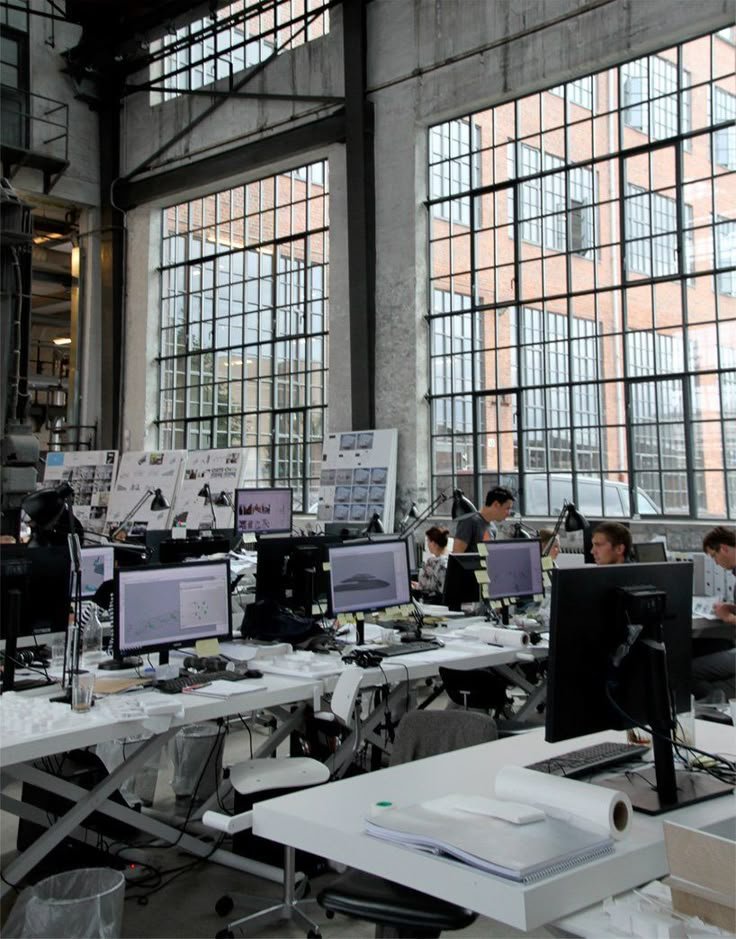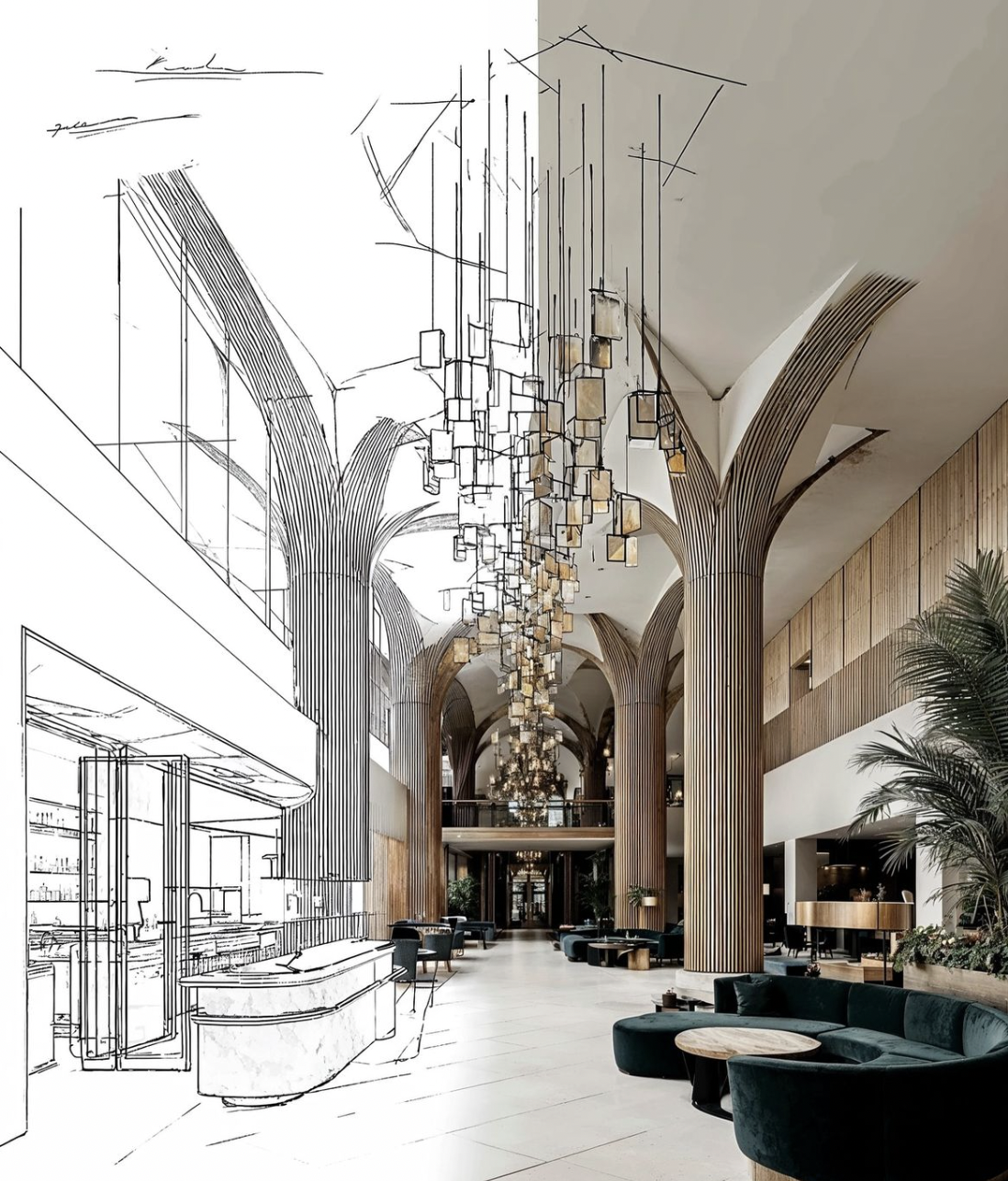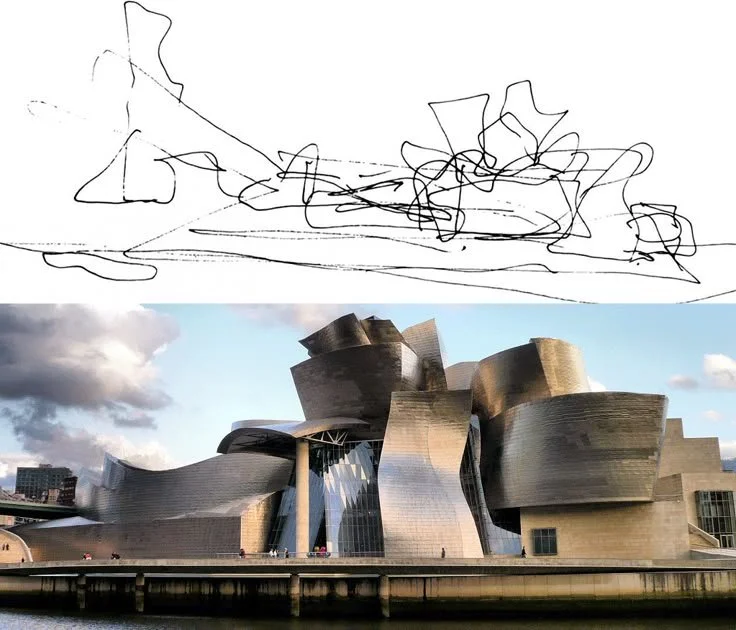Pen to Paper or Mouse to Screen: Is Technology Killing the Arts?
Like many other professions, architecture and design have undergone an immense shift in the last 20 years with consequences for its overall dynamic and structure as an industry. Rendering softwares, Artificial Intelligence and BIM softwares have rapidly become not only the preferred option, but rather the required practice and expected design process. With such a drastic shift in the operation within firms and the required skills for the industry in such a short period of time, it does raise the question - are these advancements truly helping or hurting the true identity of what design is?
There is no denying that the advancements in softwares and rendering applications do come with a multitude of benefits, both for the users and the clients. You can create and render something in a matter of minutes, they are collaborative between multiple users, and most significantly - they can produce incredible, photorealistic renderings that any viewer would be able to understand and appreciate the intended design. However, does this mean hand drawings and sketches are a thing of the past, obsolete and inefficient?
Similarly to writing by hand, rather than typing - the psychology behind drawing by hand holds so much significance, it could never be regarded as obsolete. When it comes to any subject matter, whether a detail drawing, a floor plan, or a rendering - knowing and understanding your work are two different things. The computer screen acts as a wall between you, your imagination, and reality. Designing by hand is designing with soul - the hand is the connection between the human and the work itself. If you were to have a person stand in front of you and you were told to sketch them in extreme detail, you’d walk away from that knowing every aspect of that person: their eyebrows, their hair, down to every freckle. This profession is lucky in that we see a tangible, final product - from our minds to the physical brick and mortar. Drawing our work by hand, from our mind to paper, allows us to truly create with purpose and humanity - placing each freckle exactly where we intend.
Not only is hand drawing technically beneficial in assisting with understanding scale and proportion, as well as brain function and memory, but the psychology behind it requires the mind, eyes and hands to work in unison, aiding in thinking, memory, and emotional expression. It’s the “emotional expression” that is key and what falls short when producing art through a computer. Hand sketches and drawings are the poetry of our craft - it holds emotion, honesty, and humility.
Architecture and design is conceptualized by people, created at the hands of people, and then occupied by people - so why break this chain and limit the human engagement at the initial stages of design. To architect Michael Graves’s point, “Architecture cannot divorce itself from drawing, no matter how impressive the technology gets. Drawings are not just end products: they are part of the thought process of architectural design.” Nowadays with the new generation of designers progressing through their education solely dependent on software, they are developing a discomfort or even fear towards drawing. They aren’t used to it and when we see the works of the great architects of the past, we see true artistry in their drawing skills (simply because they had no choice but to master this skill). Drawing doesn’t have to always be like that. Sketching is the voice for the creativity within our mind, it’s a conversation between the hand and the mind. It doesn't have to be perfect nor fully understandable to others. Many designers today hide behind their screens as they think all their work has to be picture perfect; in doing so they are trying to eliminate the human behind the work but the beauty of architecture resides in the hands of those who created it.
Zaha Hadid - Sketch to final design
At the end of the day, technology is only going to keep advancing and providing more efficiency within the industry, and it should continue to be used and celebrated. It is a matter of how to intertwine the two forms of expression, so they are working in tandem in order to use both the computer and the person behind it to both of their full capacities.




